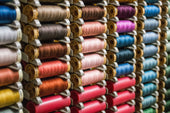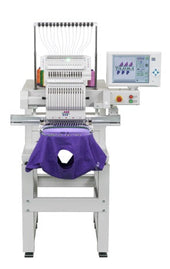Set up your sewing space at home
Creating an enjoyable and productive sewing headquarters at home requires a designated space, certain equipment and storage space. So, no matter where you currently sew, our guide will help you improve your space for sewing which in turn could improve the items you create.
Where do you sew?
You may not have many options in your home, so if you're limited by a small space, you'll need to change the way you store and work with your projects. Start by accentuating the essentials.
Good lighting will make sewing easier on the eyes and prevent mistakes. If you have access to a window, consider where you can position your sewing machine to take full advantage of the light. If you need extra light, consider a lamp. The smaller your area, the more important it is to maintain tidiness and order. Clothing making can also create a mess of threads, cuts, and paper. If you're naturally messy, find a small or easily removable space so you don't notice the mess when you're not sewing.
Cost
The budget you set for your sewing space will dictate a lot of decision making. Buying or creating furniture and storage space for the sewing room is very useful. Search the internet for helpful guides to prepare homemade or upscaled items such as a custom-made ironing board and sewing table. Use cookie boxes or an old toolbox for a sewing storage system, and use large zip-lock bags to store your current projects. Use baskets, or better yet, sew your own rope basket as accessories and hide the fabric in ottomans.
With a larger budget, decorating an entire sewing room can be really rewarding. Look for smart storage solutions that use vertical height, insist that your cutting table has shelves to store cloth and tools, and hang a perforated panel on the wall for your tools.
Equipment
When it comes to your equipment, what do you essentially need every time you sew? If you’re just starting out, only purchase what you need to complete the project. Sewing machine, cutting tool of your choice, marking tool of your choice, clear ruler, pin, needle, tape measure, pillow, iron and seam opener. If you have more space and budget, add storage space, such as shelving, reel shelving, or a trolley for your tools and concepts. You can also take a few other tools such as a tailor's ham and flapper to help with ironing, curved rulers, pattern weights, and a seam gauge. Larger items include a cutting table, a press station with all press tools, an overstitcher if you're sewing a lot of stitches, and a dress shape.
For extra organisation and easy storage, try colour coding your itinerary. With all these little tips and tricks, you should be well equipped to create your own sewing space at home. Visit us at Sewingtime today.



